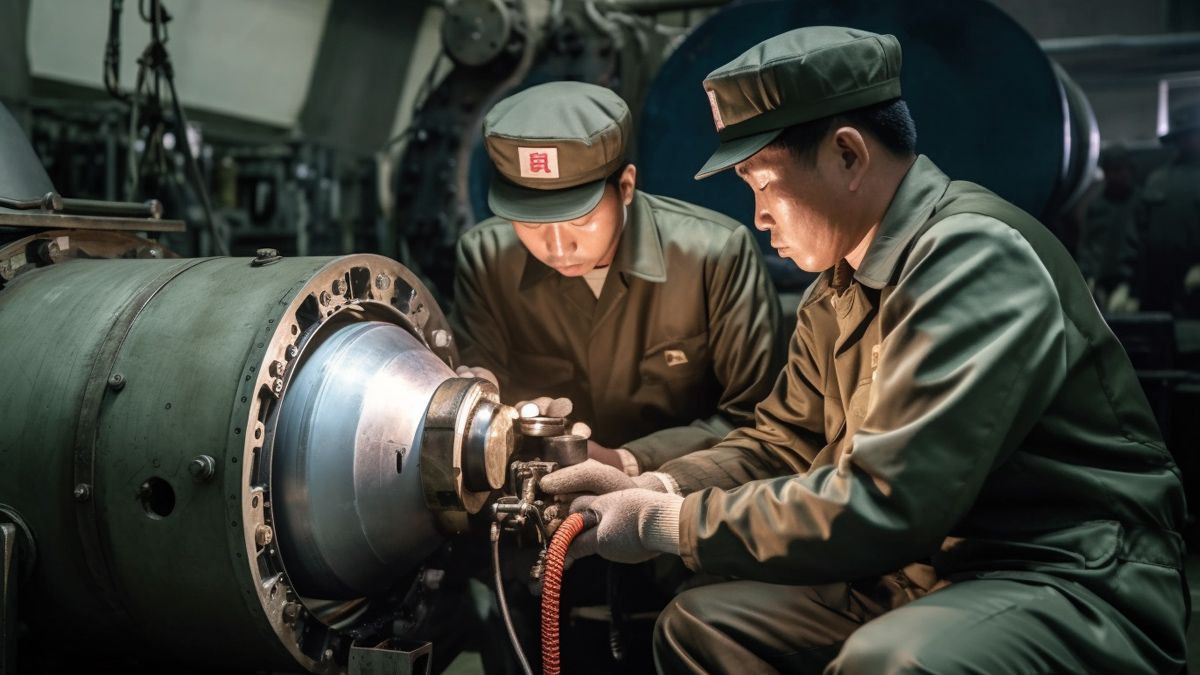North Korea Unveils Solid-Fuel Intercontinental Ballistic Missile Test

Advertisement
Analysts have said this is North Korea’s first use of solid propellants in an intermediate or intercontinental range ballistic missile, a crucial step for deploying missiles more quickly in case of conflict.
Development of the Hwasong-18
The development of the Hwasong-18 will “largely transform the elements of the DPRK’s strategic deterrence, significantly improve the effectiveness of its nuclear counterattack posture, and bring about a change in the feasibility of its military offensive strategy,” announced the North Korean news agency KCNA, using the initials of the country’s official name.
South Korea and US air forces conducted exercises a few hours after the report, involving US B-52H bombers joining F-35A, F-15, and F-16 fighter jets, said Seoul’s Defense Ministry.
“By deploying US strategic assets with increased frequency and intensity, both countries will continue to demonstrate the will of our solid alliance to never tolerate any nuclear attack from North Korea,” the ministry said in a statement.
North Korea has criticized recent joint US-South Korean military exercises, calling them an escalation of tensions, and has stepped up weapons tests in recent months.
Read also: North Korea Launches New Long-Range Ballistic Missile
Advantages of Solid-Fuel Missiles
Most of North Korea’s larger ballistic missiles use liquid propellant, which requires them to be loaded with propellant at their launch site – a lengthy and dangerous process.
“For any country that operates large-scale missile-based nuclear forces, solid-fuel missiles are an extremely desirable capability because they do not need to be refueled immediately before use,” said Ankit Panda, a senior fellow at the US-based Carnegie Endowment for International Peace. “These capabilities are much more responsive in times of crisis.”
North Korea will likely retain some liquid propellant systems, complicating calculations for the US and its allies in case of conflict, Panda said.
Vann Van Diepen, a former US government arms expert now working with the 38 North project, said solid-fuel missiles are easier and safer to use and require less logistical support – making them harder to detect and more resilient than liquid ones.
North Korea first displayed what could be a new solid-fuel ICBM at a military parade in February, after testing a high-thrust solid-fuel engine in December.
Analysts have said the US could determine whether it is a solid or liquid propellant launch through early warning satellites capable of detecting differences in infrared data produced by various types of missiles.
The latest launch comes days after Kim called for strengthening war deterrence in a “more practical and offensive” way to counter what North Korea called aggressive moves by the US.
This article was written based on information provided by Reuters news agency here.
Advertisement
Read next in World

International Investors Demand Concrete Steps to Restore Confidence in Chinese Real Estate Industry

West African Countries Impose Sanctions on Niger Following Coup

Turkish currency collapses by 7%, reaching an unprecedented level






